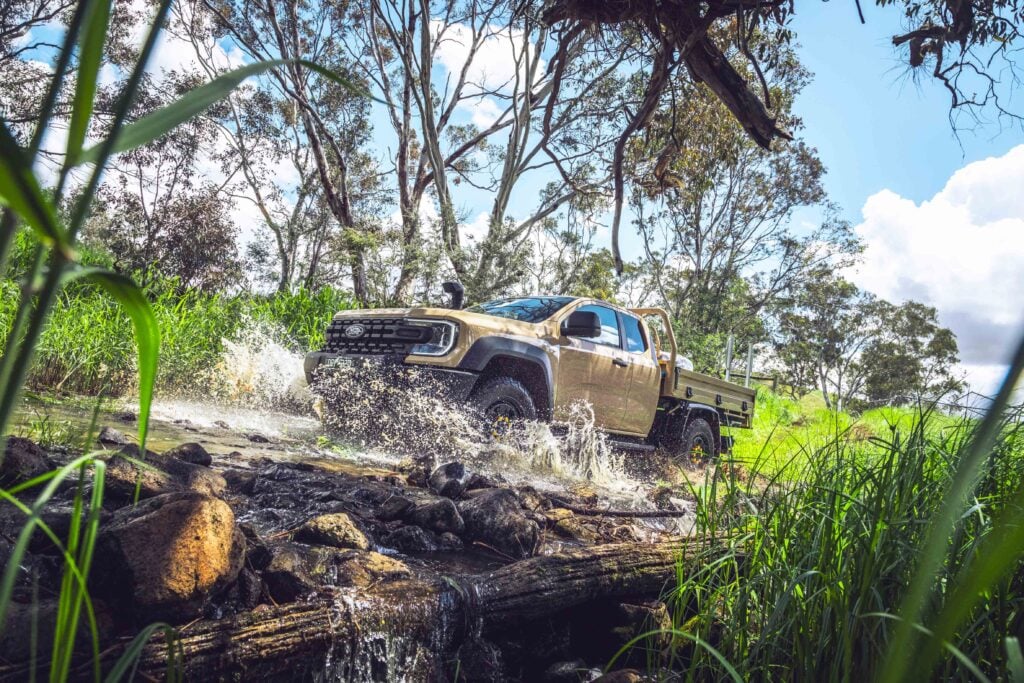Our long-serving master of lenses, Ellen Dewar, spent a big portion of this year behind the wheel of a 2024 Mitsubishi Outlander PHEV, using it as a daily runabout, to escape the bitter Melbourne winter, and for work duties on a number of photo shoots.
When the time came to hand back the keys, Ellen arranged to swap the Outlander for something a bit more versatile; this Triton GLS. Let’s follow its progress!
JUMP AHEAD
- Part 1: Triton time
- Part 2: Lumber load
- Part 3: It ain’t perfect
- Part 4: Rock-star finale
Part 1: Triton time
The GLS sits smack-bang in the middle of the Australian Triton line-up – above the GLX and GLX+ but below the top-spec GSR – and it retails for a touch under $60k at $59,090.
A GLS Leather variant is available for $60,590, which adds black leather upholstery, heated front seats and a power-adjustable driver’s seat, but we’ve settled on the stock GLS edition. Unlike the GLX and GLX+, the GLS gets Mitsubishi’s more advanced Super Select II 4WD system with 2H, 4H, 4HLc and 4LLC, 18-inch alloy wheels, standard-duty rear suspension, terrain control and hill descent control. Plus, it carries over the rear diff lock that is standard on the GLX+.
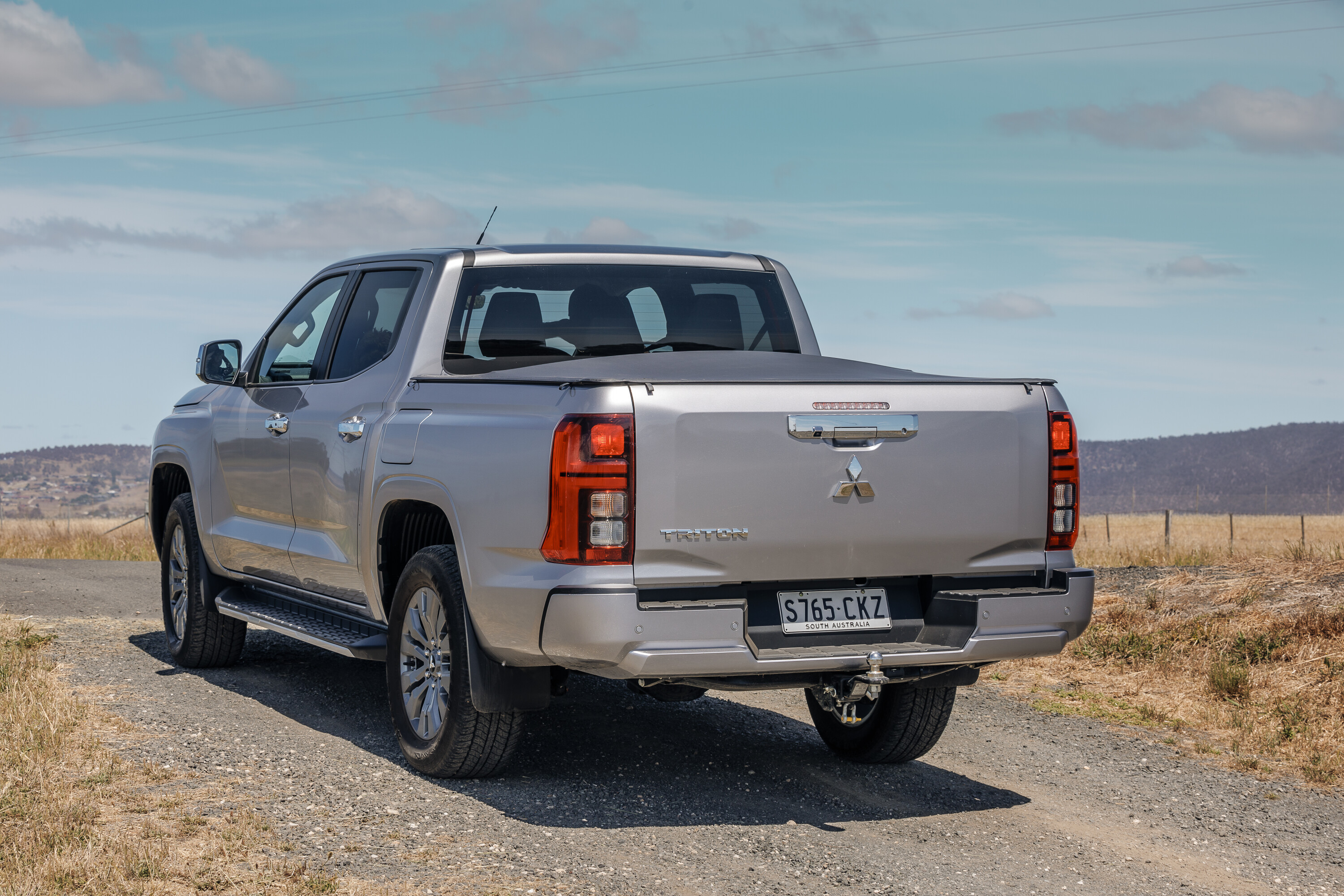
Also setting it apart from the lower-spec variants is the inclusion of LED exterior lighting; dual-zone climate control; an auto-dimming rear-view mirror; a bed liner in the tub; and heated, electrically-adjustable side mirrors with LED indicators. On the inside it also adds a wireless phone charger and soft-padded interior surfaces with silver-accented stitching.
Equipment it shares with the GLX and GLX+ includes a nine-inch infotainment system; Apple CarPlay and Android Auto compatibility (wireless for CarPlay only); a seven-inch semi-digital instrument cluster; vinyl flooring; two front and two rear USB ports (USB-A and USB-C); front and rear parking sensors; 360-degree camera, reverse autonomous emergency braking; side steps; and a Tyre Pressure Monitoring System (TPMS).

The sixth-gen Triton is loaded with eight airbags – dual front, side chest, side head, centre and driver’s knee – and it received a five-star safety rating from ANCAP. An early criticism of the new Triton was its overbearing driver monitoring system, which would (almost) caution drivers for blinking too much. Thankfully, Mitsubishi released a software update to scale back the system’s sensitivity and it’s much better as a result.
We’ve only had the Triton at 4X4 Australia HQ for a couple of days, but we’ve already taken it for a quick run off-road – essentially to get some slick photos of it. We’ve reviewed a few Tritons already, including the GLX+ and this GLS in a comparison against the Ranger and HiLux, and our quick run reminded us how competent the Mitsubishi is on both dirt and tarmac, and how incredibly easy the 4×4 system is to operate.
Ellen’s time with the Triton will run over the Christmas period, so stay tuned to 4X4 Australia to read all about her journey with it over the next few months.
- Total kilometres we’ve put on it: 769km
- Average fuel use: 8.1L/100km
Part 2: Lumber load
One of my favourite memories is barrelling up the beach on K’gari in my ex-partner’s Triton dual cab as part of many adventures some years ago. Fast forward to now and the feeling of driving the new Triton GLS is familiar, but it’s come a long way in terms of refinement, space and features.
At 5’2″ I appreciate the side steps and grab handle that make it easy to climb into the cab, and while the push button start took me a while to get used to, most of the dials around the cabin are easy to use analogue ones, and I still prefer these over having everything operated from within the infotainment screen. The 360° cameras help with reversing and there’s an additional camera that checks surroundings, which I really like as utes like the Triton can be unsuspectingly long.

The Triton’s first real job was taking a load of firewood from a neighbour’s fallen tree down to my parent’s place in South Gippsland. The tub is a little longer and wider than the previous model, and the GLS has a soft tonneau cover over it. After taking the cover off I had doubts I’d be able to get it back on as some tonneaus can be very tight, however I was proven wrong ; the front clips easily over a lip, with loops to pull over the side and rear edges with ease. An additional elastic with clips is included to secure large items, and the tub liner does a great job of protecting the painted surfaces.
With the windows up I was surprised at how good engine noise suppression is, especially for a diesel, but as my eyes wandered from the straight ahead – it’s the photographer in me, I can’t help it – the driver distraction indicator lights up… again and again. I understand the logic behind this feature but to me it’s bothersome when looking around for locations to shoot, or even just looking around and enjoying my surroundings. Mitsubishi has recalibrated and updated the software but to be honest it’s still too sensitive for my liking.
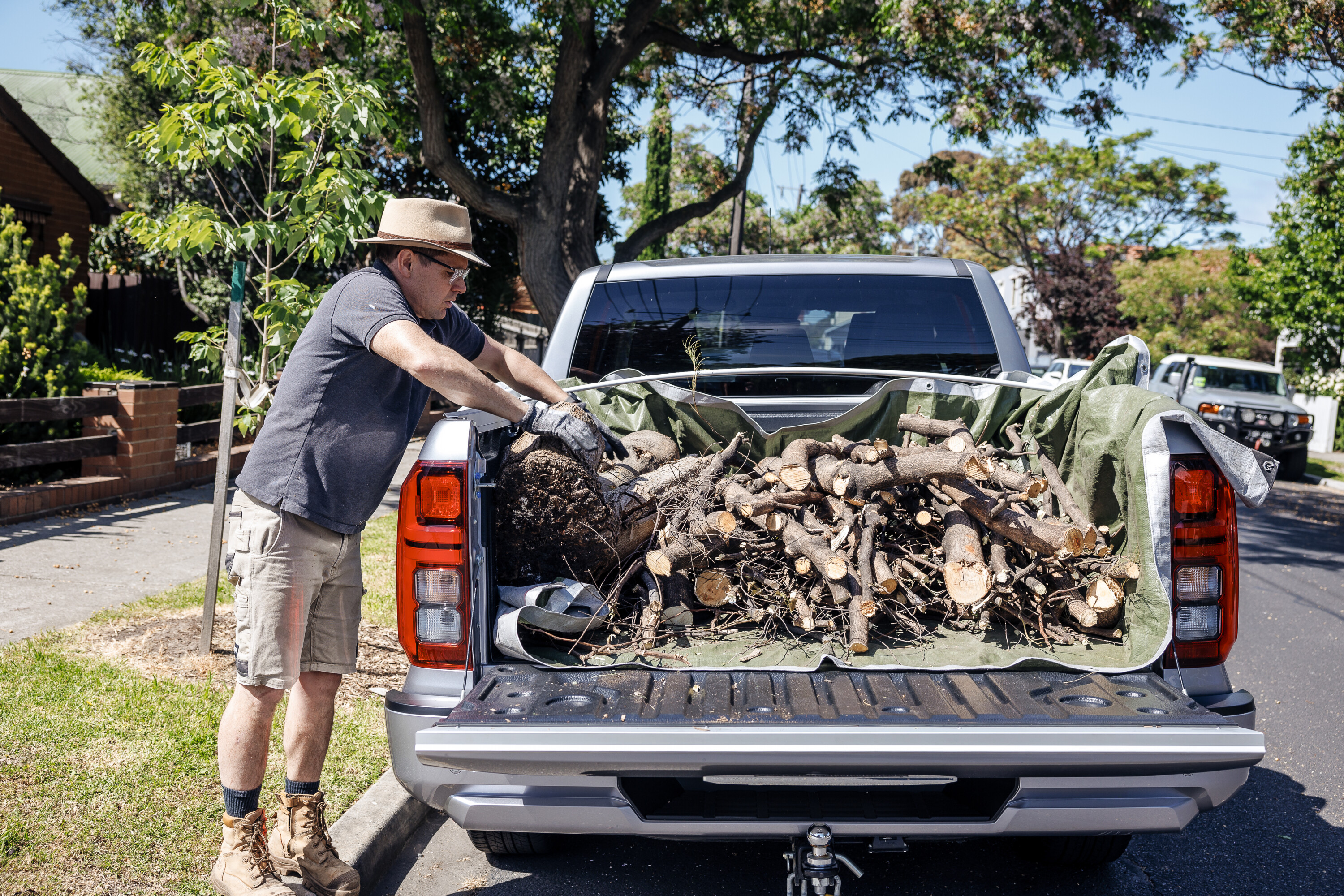
With a load in the rear the ride in the Triton felt grounded and stable through the rolling hills and gravel roads of Gippsland. A photo trip to Lerdederg with nothing in the tray showed that steady and measured driving on gravel is best in a ute, but back on the highway it drives much like any SUV, with the cruise control easy to use and intuitive, and blind spot warnings always helpful.
In these first weeks I’ve found the Triton to be user friendly for the most part; steering adjustment has taken some time to get right, but I am short and little. Its rear seating is a little roomier than I recall, so taking my teenage nephew to help offload the wood wasn’t a squeeze for him.
The Triton’s usability and practicality on point, but I’ll reserve any further judgment until after a longer stint behind the wheel.
- Kilometres since previous update: 413km
- Average fuel use: 9.8L/100km
Part 3: It ain’t perfect
The Triton has proven handy for long days on photo shoots and driving hither and thither.
On a shoot north of Melbourne, out in the state forest near Heathcote Junction, I was heading up the Hume Highway, coffee in hand, when the driver monitor alerted me: “Drowsiness detected, take a break.” I’d been on the road all of 20 minutes and I needed a break? It seems that one-handed steering and sipping a cuppa isn’t in the system’s visual repertoire.
Music is a must on the road and using the 9.0-inch infotainment system with Apple Carplay made it easy to select my road-trip playlist, and the six-speaker sound system sounds just fine. My preference is for the USB for phone charging as the charging pad seems to make my phone very hot.

It was smooth driving on the highway and after grabbing a sausage roll and a drink at the local bakery we hit the dirt. I selected Gravel mode and off we went. Without a load in the tub, the ride was quite bouncy, to the point of being jarring over potholes, which had me backing off the pace quite a bit. The steering felt light and responsive, at least, especially compared to my FJ Cruiser.
I shifted into 4H to navigate a steep descent and then an ascent, and the Triton made light work of it. At the photo shoot I jumped into the tub to get some extra height when shooting engine bays and a roof rack setup. Although the tub has a tonneau cover it doesn’t do much to keep the dust out, so I need to stow all of my camera gear on the back seat and on the floor of the cabin.
While there’s decent space in the back for rear-seat passengers, I doubt they’d be very comfortable back there bouncing around on gravel roads and off-road tracks.

When I got home I discovered a bolt had well and truly lodged itself in one of the front tyres, which was slowly deflating, so I set about changing it for the spare. The jack and brace setup is located behind the back seat. Winding down the spare from beneath the tub should have been easy – just feed the pole through a gap and wind, but this is an exact science with a specific angle required all while laying on hot concrete with hands getting covered in dirt and muck.
Dragging the spare out was a struggle as well, but with persistence I got there. Frustratingly, I couldn’t for the life of me get the wheel nuts undone; time to call in some masculine muscle. Using the marked jacking points meant the supplied jack didn’t quite have the extension to lift the wheel off the ground, so we used a trolley jack instead. I was dripping in sweat by the time the job was finally done. I reckon the OE jack and associated equipment could only just get you out of a bind, and it would certainly not be up to off-road adventuring.
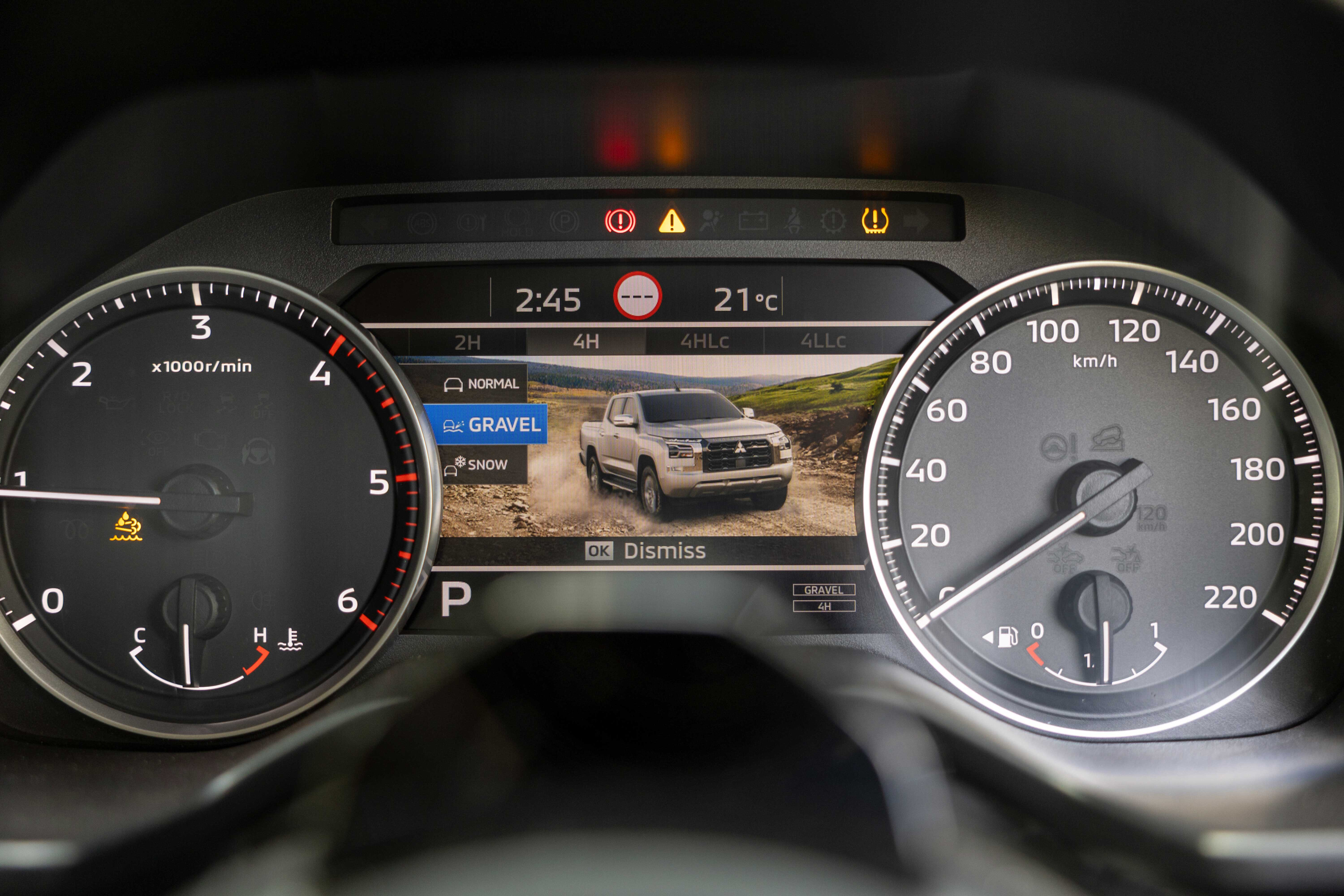
Also, it seems the spare doesn’t come with a sensor for the TPMS, so recalibrating the tyre pressures didn’t work. Carry a portable pressure gauge, perhaps? In hindsight I should’ve called for help earlier as I spent the next week hobbling around with a tweaked back and nasty sciatica.
- Kilometres since previous update: 860km
- Average fuel use: 8.1L/100km
Part 4: Rock-star finale
It’s an early start Friday morning, throwing the swag, awning and camp chair into the tray, in readiness for a road trip down the coast.
As I roll to a stop on the freeway on-ramp the Triton’s auto stop engages, I lift the brake and there is a notable delay in the restart. I get the purpose of the auto-stop in urban environs, however the Triton’s a bit slow to fire up and that really isn’t ideal for on-ramp scenarios where you need to brake, hold, brake and hold. This is why I usually opt to deactivate the stop-start system.
I’m heading to Lerderderg to meet the 4X4 Australia crew to photograph a comparison test before venturing down the Great Ocean Road for a weekend of music and camping. Finally I get out of town to stretch the Triton’s legs, and mine to the sound of bands rocking.
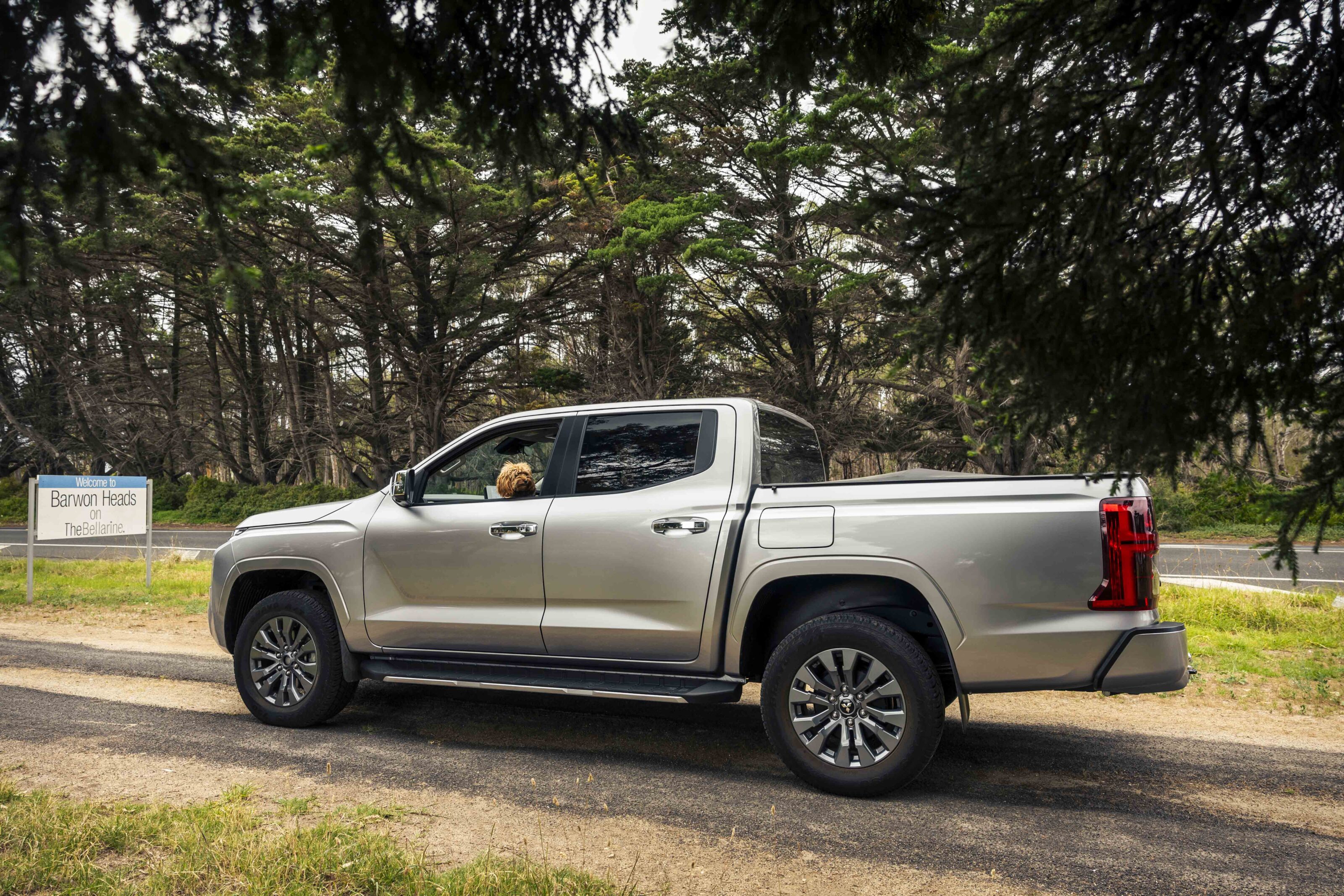
The Triton has been a great workhorse, and makes for an excellent shooting platform for various photographic assignments, traipsing up, down and around many parts of Victoria with ease and confidence.
It’s a stinking hot day, the GLS’s rear seats are fully loaded with camera gear and fridge, the latter working hard to keep cool. A lack of rain has made the tracks very dusty and the tonneau doesn’t do much to keep dust out of the tray.
Finishing up the long work day, I wave goodbye and point the Triton towards the Great Ocean Road. With three-and-a-half hours to my destination I get comfortable for the drive. I turn off the highway and the map sends me through the farm country of Winchelsea and Colac.
A light on the dash has been illuminated for at least a week now telling me ‘AdBlue required in 2400 km’. This reminder pops up every time I start the Triton and now it says ‘AdBlue required in 1500km’. Rolling through ColacI spot a BP out the corner of my eye with AdBlue, so I fill it with 10 litres straight from the bowser. Finally, one less beeping message.
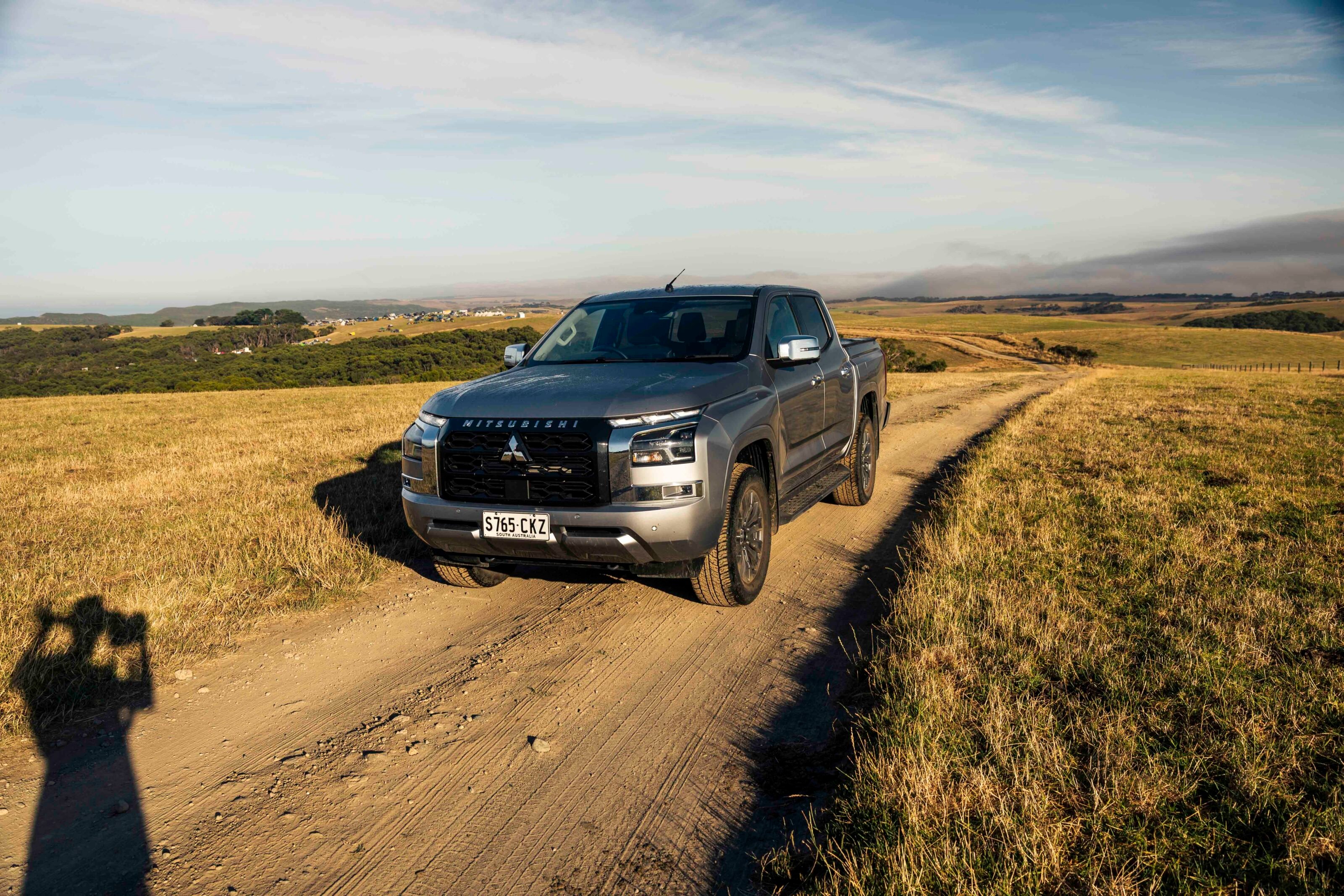
The roads aren’t the best and the Triton’s ride is a little bouncy when lightly laden. With the adaptive cruise activated I approach a Toyota Kluger wandering around the road; someone needs a nap! The adaptive cruise control allows me just to stay back without having to apply the brakes.
Following the Kluger for 15 minutes with no overtaking available, I watch with horror as it takes a corner way too wide. I decide it’s time to put some space between us; a long straight allows me to put my foot down and the Triton responds with decent acceleration. I wave the sleepy driver goodbye, watching in my rear view as the Kluger pulls over over moments later for a rest stop.
A gate just outside of Princetown covered in flags is my entry to a beautiful farm where the festival is taking place. The triton handles the rough farm tracks confidently, down into the valley, with views down to Princetown, the closest town to the 12 Apostles.
I pull up next to my mates who have set up early, and strategically park the Triton where it will shade my swag the following morning. The weekend is going to be hot.

Outdoor festivals are fun but having the right vehicle to get you in and out of paddocks and dusty tracks is beneficial, and the Triton is the perfect vehicle for this. In the morning we squeeze five people into the Triton and my passengers comment on the generous legroom, comfortable seating and the decent head rests, and the bonus rear-ceiling ducts for the air conditioning which blow cool air into the sweaty crew as we navigate dusty tracks down to the river for a morning swim, flotation devices thrown in the tray.
The only drawback of the rear air ducts is that there’s no front control for the fan (at least none that I could see), so when I left the festival solo I couldn’t easily switch it off, so you have to remind passengers to do so before exiting. If you’re long-armed you might reach back to access the controls, but not I.
Covered in dust inside and out, the Triton and I avoid heading home too early by detouring via Barwon Heads to visit friends for one final night. It is pouring with rain and whilst it isn’t the sunny afternoon I was hoping for, the sun pokes through the clouds the following morning allowing for a short swim and a look around town before cruising back into Melbourne for some reflection.
Utes really have become a popular choice thanks to their versatility – dual cab for the kids, tray for the odd jobs or trades, and enough payload capacity for holidays on which you want to take everything but the kitchen sink. While there are compromises in some areas with utes, the Triton GLS has proven itself to be a great all-rounder and it’s certainly worth fair consideration if you are in the market for a new 4×4.
- Kilometres since previous update: 1547km
- Average fuel use: 8.0L/100km



